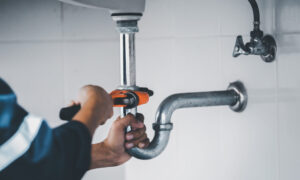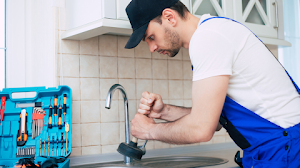If you own a plumbing business, you know how important it is to provide your clients with high-quality goods and services to help them maintain a functional plumbing system. To better assist today’s technologically aware residential and business clients, plumbers need to remain current on the latest developments in the field.
There has been a consistent increase in the demand for plumbing fixtures and another smart home systems. According to a worldwide market and consumer research business, the smart home industry in North America alone is expected to generate almost $66.5 billion in sales by 2023. The latest plumbing innovations help households save both time and money.
The Environmental Protection Agency reports that households may reduce their water consumption by at least 20% by upgrading to more water-efficient fixtures and appliances. New plumbing supplies are essential for business clients who worry about their water usage’s environmental effects. It is important to keep up with technological advances and become experts in the latest tools.
1) Touchless Fixtures Are Popular
New plumbing innovations improve usability, manageability, cost-effectiveness, and environmental friendliness. Even though touchless fixtures have been available for some time, demand is growing annually.
The present market for smart bathroom fixtures is worth $5 billion, and it’s poised to completely transform the plumbing sector with its cutting-edge hardware and environmentally conscious designs.
Touchless faucets, sensor-enabled soap dispensers, and automated cistern systems are a few examples of smart fixtures that contribute to a more adaptable and plush bathroom for all users. Take a look at Sloan’s touchless sinks and toilets.
Sensors in the sink and tub allow for hands-free use of these conveniences. This not only helps to reduce water and power use but also significantly increases sanitation standards in public bathrooms.
2) Smart Toilets to Boom
Automatic flushing, overflow safety, water savings features, a built-in deodorizer, sensor-enabled commercial LED lighting, self-cleaning capabilities, and many more are some features in today’s smart toilets. These high-tech loos are increasingly common in the smart home market.
This shift is prompted by several factors, including an increase in the demand for hygienic-sanitary goods, shifts in consumer behavior, and a greater focus on water conservation worldwide.
Brands like Kohler and Ove are developing new amenities that conventional toilets lack. With a robust CAGR of 9.89% between 2018 and 2026, the smart toilet market is projected to grow from its 2018 valuation of $6.08 billion to $12.9 billion by 2026.
Sensor-equipped, internet-connected loos that can sort trash will become commonplace in the next years. This will help spot the beginnings of more serious diseases, including diabetes, infections, renal failure, and cancer. In addition to alleviating people’s bathroom needs, these facilities will aid public health monitoring and information sharing.
3) Water-Leak Sensors Will Be in High Demand
Dripping pipes, a malfunctioning washing machine, or a broken water heater can all lead to costly repairs in the home. Moreover, repairing broken plumbing can be expensive. The yearly cost of insurance claims for water damage has increased to $2.5 billion.
Moreover, there has been a rise in water conservation efforts as more people become ecologically concerned. There is less damage that plumbing issues can do if smart leak detectors are used. The leak sensors will sound an alarm or notify when a leak is detected. In the case of catastrophic failure, certain more modern systems can also shut off the valves.
They can also warn the homeowner of dangerous humidity levels and subfreezing temperatures. Leading companies in the smart leak detection industry include Honeywell, Samsung, and LeakSMART, all of which are vying for a greater slice of a market that is only forecast to grow at a 4.4% CAGR.
The primary drivers driving this trend are the increasing number of residential and commercial applications, the fierce rivalry, the new releases, and the retrofitting and rehabilitation of existing technologies.
4) Smart Irrigation Is Picking Up Steam
One of the most significant changes in agricultural plumbing in 2021 has been increased hydraulic efficiency. In the modern era, sensors and remote meters have allowed farmers to monitor soil moisture and climate conditions.
They can conserve water and lessen their environmental impact by using technological solutions such as automated irrigation rescheduling. In addition, crop health data may be gleaned through remote sensing.
The advancement in sensor technology has allowed for better management and operation of plumbing systems in agricultural settings. More irrigation districts will start using smart solutions in the plumbing sector to water their land according to the actual demands of the crop in the future years.
5) Specialty Plumbing Tools
Technological advancements profoundly influence how team emergency plumber handle problems in homes and businesses. Repairing a leak in the wall cavity, for instance, necessitates pulling down the wall entirely, which is a major disruption.
Beyond wrenches and water jetters, today’s plumbers’ tools are capable of much more. These days, plumbers may take advantage of various business resources designed to save them time and money in their daily operations.
Inspecting sewers with a drain inspection camera is possible thanks to systems that provide HD video, mobility, and self-leveling camera heads, among other advantages. More cutting-edge resources designed to help plumbing companies will likely emerge shortly.
6) Increased Greywater Plumbing Education for Consumers
People are becoming more environmentally conscious and trying to lessen their environmental impact. So, they’re trying to find preventative measures, such as greywater recycling, to lessen the damage they do to the natural world.
Approximately 75% of domestic wastewater is greywater. As a plumber, you may instruct clients in the use of greywater systems to reuse this water. A major goal of this plumbing design is to reuse this water in landscaping.
An accumulation tank stores the wastewater until it may be utilized for irrigation or another purpose. Putting in one of these systems can help save money and the planet simultaneously.
Final Thoughts
Top trends in the plumbing business are driven by the pursuit of convenience and the goals of cost savings and environmental protection. If you’re a business owner or manager in the plumbing industry, you should pay attention to the developments discussed here. To better serve your customers and stay ahead of the competition, you should keep up with these developments.



































